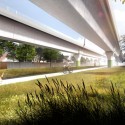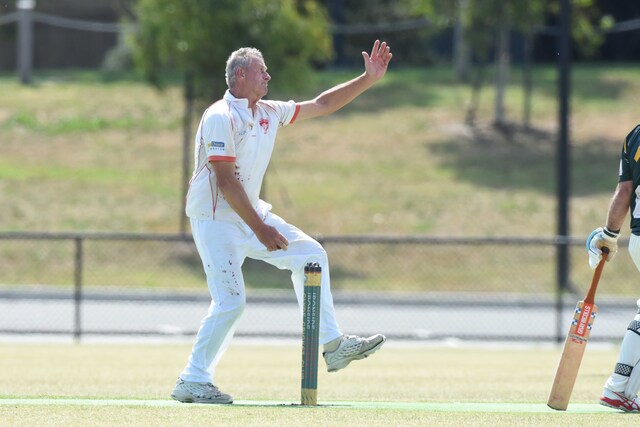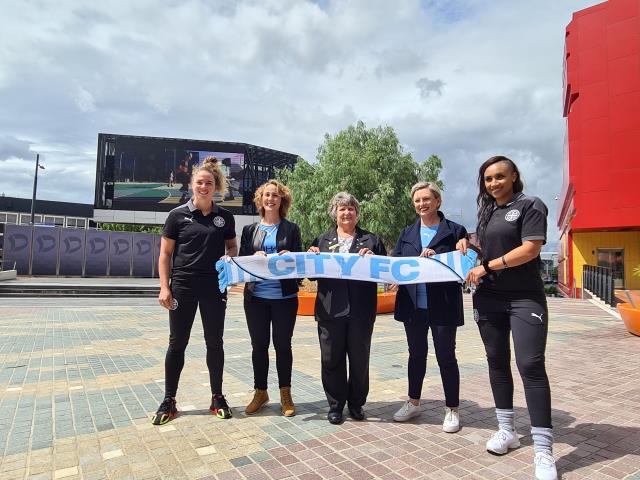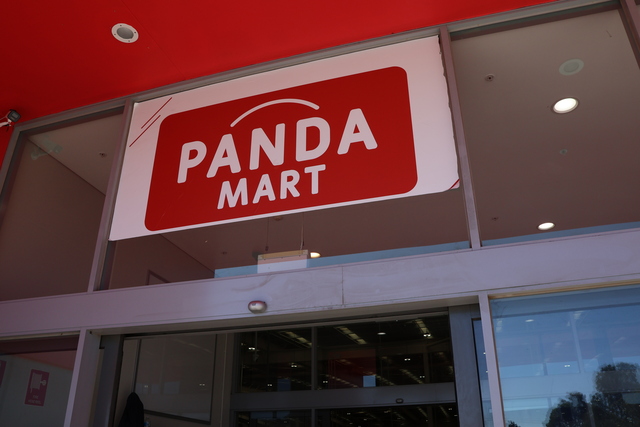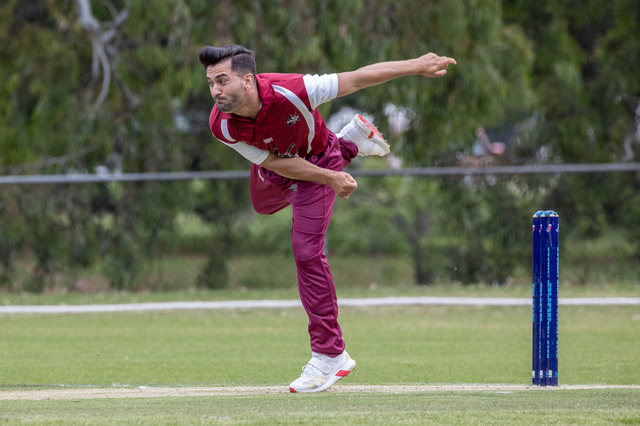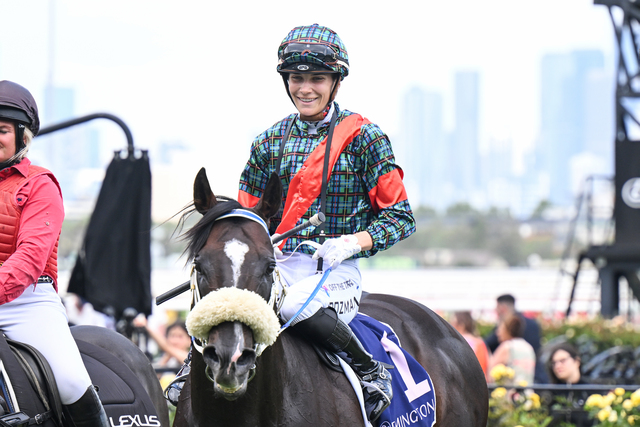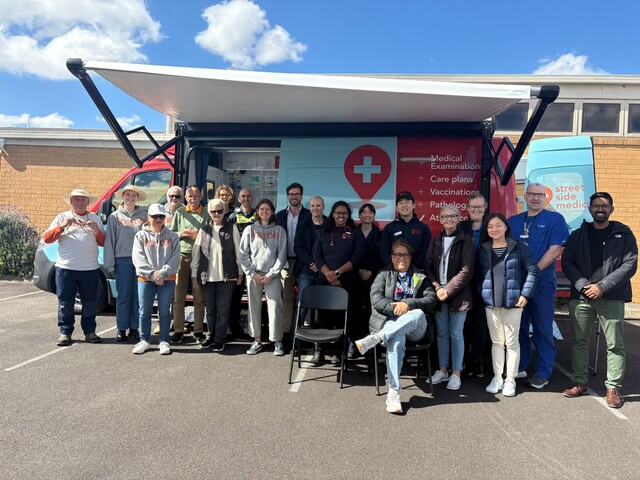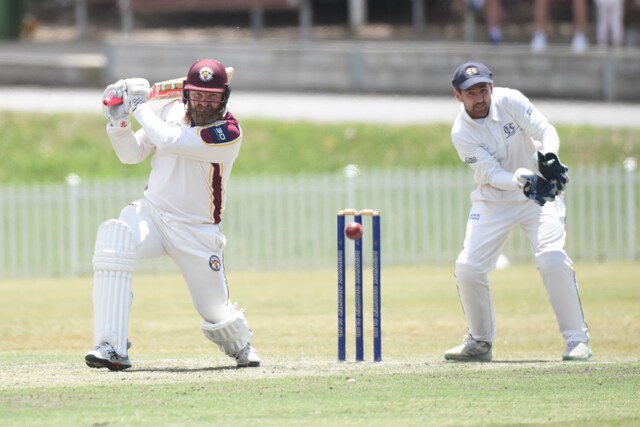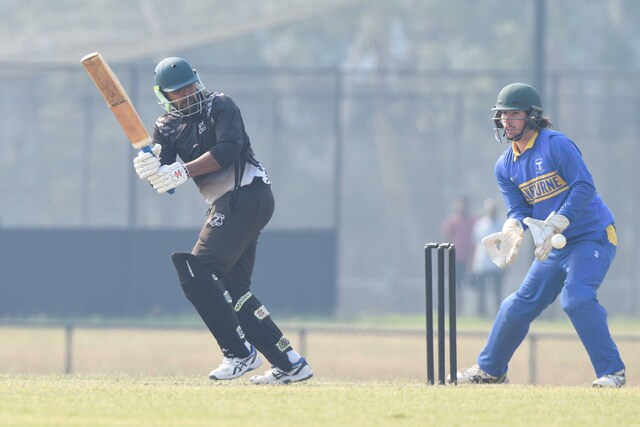By CAM LUCADOU-WELLS
A PRO-sky rail academic’s arguments were drowned by a cauldron of opposition at a Noble Park public meeting on 5 April.
Ian Woodcock, a design-and-social-context lecturer at RMIT University, traded barbs with local residents, Liberal MPs, and No Sky Rail members from Murumbeena and Frankston rail corridor suburbs.
There were plenty of interjections at the Public Transport Users Association-hosted forum as Mr Woodcock presented picturesque ideas for developing the space under the elevated rail.
He said sky rail was likely to happen so “make sure it’s as good as it can possibly be”, he said.
The community needed to establish a ‘friends group’ to assert what it wanted under the sky rail.
“You’ve got the advantage of getting in early before it’s built.”
Some of the options were a bicycle “superhighway”, a trail under the railway tracks that rises above intersecting roads.
Others included a corridor of biologically diverse parks and gardens and artistic light projections on the pylons.
The forum hears that water play spaces were installed in the Netherlands and in New York, a former elevated rail track, dubbed the Highline, has developed into a major tourism attraction.
The Level Crossing Removal Authority has closed a public submission process on what to do with the “11 MCGs” of public open space under the tracks.
Noble Park resident Dawn Vernon said she leaned in favour of the sky rail, particularly due to the linkage of Ian Street and Leonard Avenue – currently separated by train tracks.
There was also an opportunity to create badly-needed car parking.
However she told the meeting she was concerned about ongoing funding to maintain the under-rail parks.
“I’m concerned that these parklands aren’t going to look as pretty as these pictures.”
Resident Gaye Guest questioned the aptness of sky rail concepts in low-density residential areas.
“You’re showing us big cities but we’re suburbs. We’re not the CBD.”
Mr Woodcock was forced into repeated assertions that his research was “completely independent” and not compromised by government funding.
“My salary comes from the university only,” Mr Woodcock said.
He and Melbourne University academic John Arnold had come under attack from the Liberal Party after their research was cited in support of the sky rail project.
Mr Woodcock said he had no say nor prior knowledge of the sky rail project itself. His research had been funded by a previous government, he told the forum.
Some in the audience voiced concern that the meeting had become politically hijacked.
In response to goading from upper house MP David Davis on the issue, Mr Woodcock told him: “If that’s what you believe … goes on in universities, you might as well leave.”
Mr Woodcock declined to answer MP Inga Peulich’s requests on the grounds that he couldn’t make “political comments”.
The project, which removes nine level crossings in the Dandenong rail corridor, has sparked protest groups and criticism from neighbouring residents.
A Mile Creek Residents Group in Noble Park has recently voiced concern about noise, loss of privacy and unsightly, graffiti-strewn pylons as well as the tracks being shifted closer to their homes.
Mr Woodcock said the Springvale railway station rail-under-road design was surprisingly dark, and produced a lesser experience than elevated railway stations “with a view”.
Mr Woodcock was challenged on the impact of increased freight trains connected to the under-construction inland rail port at Lyndhurst.
He stated the sky rail’s modern tracks would be less noisy than the existing clunky rail and boom gate bells. Any noise dissipates upwards, he said.

